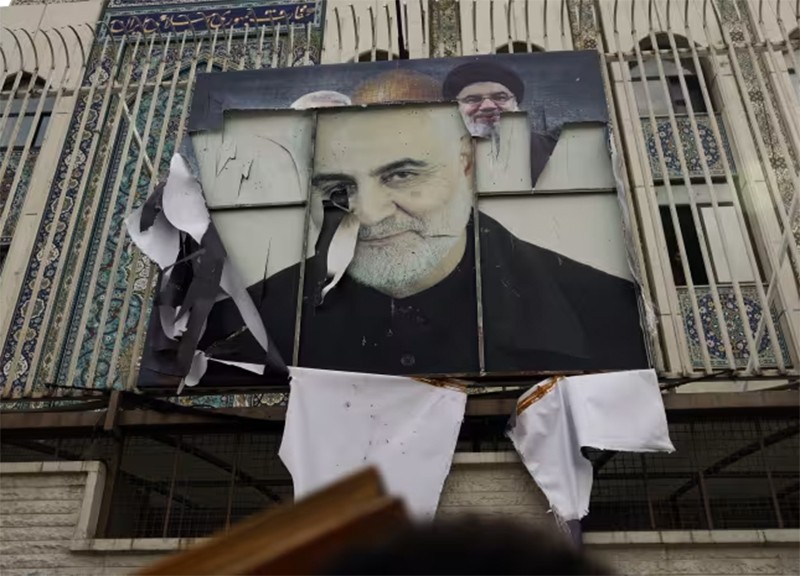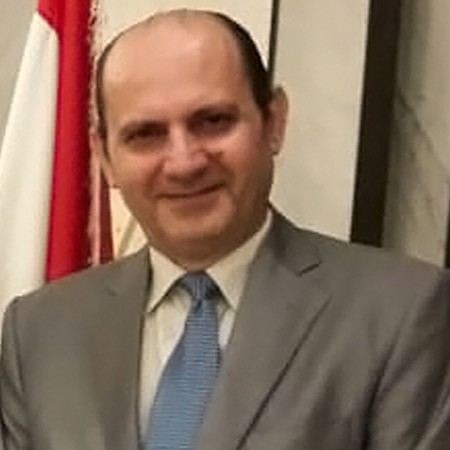
Tehran loses a pillar of its national-security strategy as it prepares for more confrontation with Trump
By Sune Engel Rasmussen, WSJ.
Iran spent decades and billions of dollars building a network of militias and governments that allowed it to exercise political and military influence across the Middle East, and deter foreign attacks on its soil.
In a matter of weeks, the pillars of that alliance came crashing down.
The departure of Syria’s Bashar al-Assad is the latest strategic catastrophe that will force Iran to rethink decades old security policies, just as it is confronting the election of President-elect Donald Trump and his promises of new pressure on Tehran.
Assad’s removal also is the climax of events catalyzed by the Hamas attack on Israel on Oct. 7, 2023, resulting in the most fundamental change in Iran’s security landscape since the U.S. invasion of Iraq in 2003. But, while the toppling of Saddam Hussein ultimately provided Iran with opportunity, Tehran is at a disadvantage.
In more than a year of attacks, Israel has devastated Hamas, Iran’s main Palestinian ally. Since September, Israel has killed most of the leadership of Hezbollah, the Lebanese militia that is Iran’s most powerful ally, and sent its surviving top commanders into hiding. Assad’s toppling destroys the entire front line of Iran’s so-called “forward defense,” said Ali Vaez, director of the International Crisis Group’s Iran Project.
“The Islamic Republic thought that Hamas’s 7 Oct. attack was a turning point in history. That’s true, but in the entirely opposite direction to what it hoped for,” he said. “The dominoes for its western front have fallen one after the other.”
Syria was Iran’s only state ally in the Middle East. More important, it provided Iran with land access to Hezbollah, the centerpiece of its self-labeled “axis of resistance,” which thanks to Tehran’s support became the world’s bestarmed nonstate actor. “There is no axis of resistance without access to Hezbollah,” Vaez said.
Iran is grappling with this new security landscape as its clerical leadership is aging, with Supreme Leader Ayatollah Ali Khamenei turning 86 years old next year. The Islamic government’s popularity at home is waning, and its archenemy Israel is emboldened.
The past year’s setbacks have raised concerns that Iran might accelerate its nuclear program to restore some deterrence against foreign attacks. For months, Iranian officials have openly debated whether to ramp up its nuclear efforts, and whether to reconsider Khamenei’s two-decade-old pledge not to procure weapons of mass destruction.
A U.S. intelligence report released last week pointed to growing risks of an Iranian decision to build a bomb.
The removal of Hamas and Hezbollah as immediate threats to Israel diminished the deterrence Iran previously had against Israeli attacks. Israel earlier this year launched two rounds of direct airstrikes against Iran that hit military facilities and took out Russianprovided aerial-defense systems.
Ultimately, Tehran openly abandoned Assad after defending his rule through more than a decade of civil war, said Norman Roule, the top U.S. intelligence official for Iran from 2008 to 2017.
“Israel killed a generation of Hezbollah and IRGC commanders with Syria expertise, for example, and they took bureaucratic networks and coordination capacity to their graves,” Roule said. The Assad regime’s collapse, he added, was a “strategic blow of historic proportions” for Iran.
Iran has signaled that it will try to maintain influence in Syria. The Iranian Foreign Ministry on Sunday called for the formation of a government that represents all Syrians, saying relations between the two countries had a long, friendly history.
The first signs from Post-Assad Syria, however, haven’t been friendly. Many Syrians hold Tehran responsible, alongside Hezbollah, for aiding Assad’s oppression. While rebels spared the Russian embassy after entering Damascus, they ransacked the Iranian mission.
While Syria’s future is in flux, it is unlikely whatever leadership emerges will “support Iran’s aims in the way that an Assad-controlled Syrian national government could,” said Sam Heller, a Syria expert at Century International, a progressive think tank.
The loss of Syria will also have economic ramifications for sanctions-battered Iran. In 2023 alone, Syria imported nearly 40 million barrels of oil from Iran, according to the online Syria Report, which monitors Syria’s economy. Syria paid for the oil on credit lines, and its total debt to Iran is estimated by Iranian lawmakers at tens of billions of dollars.
For Hezbollah, a U.S.-designated terrorist organization, Syria provided a financial and logistical lifeline. The group profited from smuggling Iranian oil and other goods, seizing property and controlling trade routes. It collected scrap metal from bombed-out villages for weapons manufacturing, according to Syrian activists tracking its activities.
Hezbollah also profited from drug smuggling, particularly of the amphetaminelike captagon, which is produced in the deserts of Syria and makes up about $6 billion trade that is largely controlled by a Syrian army division commanded by Bashar alAssad’s brother Maher.
“The biggest loser will be Hezbollah, not just politically but economically as well,” said Haid Haid, a consulting associate fellow with Chatham House.














